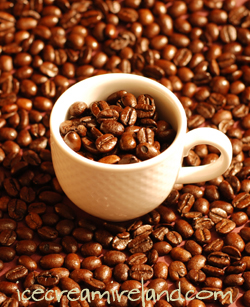 Over the last year, we have been on a hunt for good Fairtrade beans for our espresso bar. Our coffee supplier brought us an excellent Fairtrade and organic bean in the spring that is great for our non-espresso coffees, which we serve in a cafetierre. It’s full flavoured and certainly makes a nonsense of anyone saying one has to suffer for organic!
Over the last year, we have been on a hunt for good Fairtrade beans for our espresso bar. Our coffee supplier brought us an excellent Fairtrade and organic bean in the spring that is great for our non-espresso coffees, which we serve in a cafetierre. It’s full flavoured and certainly makes a nonsense of anyone saying one has to suffer for organic!
The espresso bean has been harder, because there are limited options, and most, it must be said, are quite poor. We are not willing to suffer any drop in taste. Our existing bean has made so many of our customers happy; it would be foolish to give them anything that doesn’t match up.
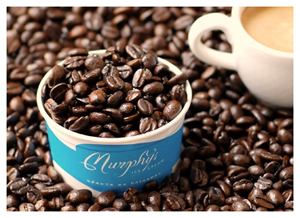 It’s also tricky – what might taste great in an espresso might not be so good in a cappuccino. It’s hard to find a bean that tastes good across the range of espresso bar offerings.
It’s also tricky – what might taste great in an espresso might not be so good in a cappuccino. It’s hard to find a bean that tastes good across the range of espresso bar offerings.
However, if the likes of us don’t push for fairtrade and organics, the options are unlikely to improve. So, we pushed.
It would seem as if our coffee supplier has come through again. Last week he dropped in a bag of Fairtrade (though sadly not organic) beans that are a mix from small farmers in Brazil, Tanzania, Guatamala, and Columbia. They are very good indeed, and I think we will make the switch. If our customers are as happy as we are, it’s a keeper!
Technorati tags: espresso, fairtrade, cappuccino, coffee, organic, Ireland












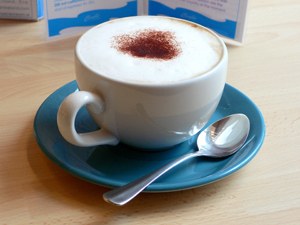 A
A 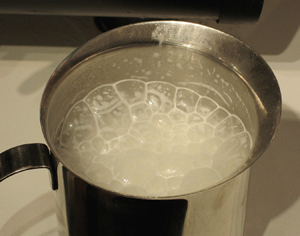 Interestingly, this time of year it’s harder to froth the milk. As the cows go off a diet of grass and start eating
Interestingly, this time of year it’s harder to froth the milk. As the cows go off a diet of grass and start eating 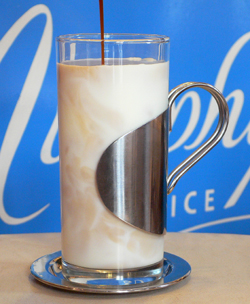 Â A customer in our
 A customer in our 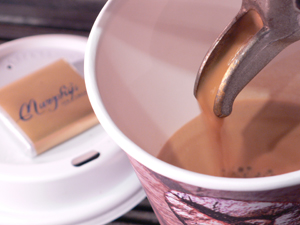 I’m afraid I was making coffees for most of the day, and hence I feel another
I’m afraid I was making coffees for most of the day, and hence I feel another 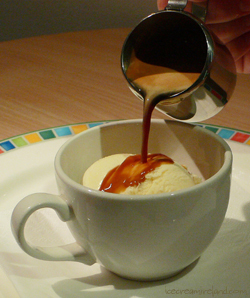 One of my favourite treats in the whole world is the Affogato al Caffe, and I just wish that more people knew about it! After all, it combines two of my favourite things – coffee and chocolate. If I make an affogato with chocolate ice cream, it includes three, although vanilla would be the more popular option…
One of my favourite treats in the whole world is the Affogato al Caffe, and I just wish that more people knew about it! After all, it combines two of my favourite things – coffee and chocolate. If I make an affogato with chocolate ice cream, it includes three, although vanilla would be the more popular option…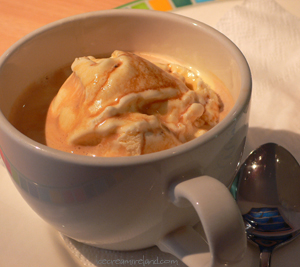 In any case, the name Affogato means “drowned in coffee,” referring of course to the ice cream, and when I came across it, I thought I was in heaven.
In any case, the name Affogato means “drowned in coffee,” referring of course to the ice cream, and when I came across it, I thought I was in heaven.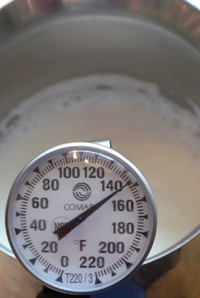 Before I wrote that post, I had one of the worst cappuccinos I have ever attempted to imbibe in a mall in South Dublin, and I paid 3.50 for the privilege. And I though
Before I wrote that post, I had one of the worst cappuccinos I have ever attempted to imbibe in a mall in South Dublin, and I paid 3.50 for the privilege. And I though 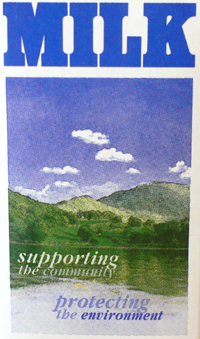 Ultra heat treated milk is the rule on the continent and is what you would get when you order a cappuccino or latte in Italy, Germany, etc. A new product on the Irish market now is
Ultra heat treated milk is the rule on the continent and is what you would get when you order a cappuccino or latte in Italy, Germany, etc. A new product on the Irish market now is 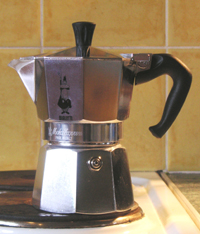 Copernicus over at
Copernicus over at 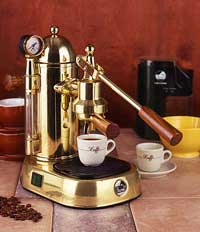 Â In fact, it’s only a guide (though a good one) even in a cafe. There is a excellent article on
 In fact, it’s only a guide (though a good one) even in a cafe. There is a excellent article on 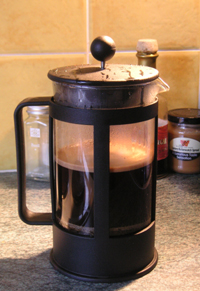 I think my grandmother would have stared blankly at any mention of “crema” regarding her coffee pot, as would probably most Italians making coffee by this method. They would probably say, “If you want crema, go to an espresso bar. If you want a good coffee, stop babbling nonsense, and I will serve it to you.”
I think my grandmother would have stared blankly at any mention of “crema” regarding her coffee pot, as would probably most Italians making coffee by this method. They would probably say, “If you want crema, go to an espresso bar. If you want a good coffee, stop babbling nonsense, and I will serve it to you.”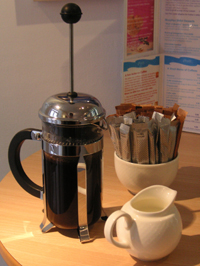 With apologies to
With apologies to 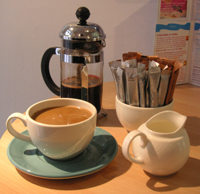 In our shops, we’ve been serving
In our shops, we’ve been serving